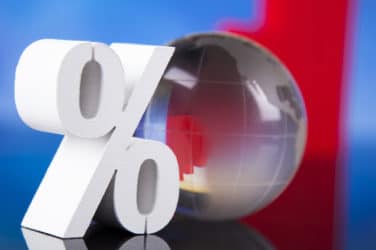
Only one-tenth of global derivatives turnover is in contracts denominated in the currency of an emerging market economy, and what is traded is disproportionately over-the-counter, according to the Bank of International Settlements.
The BIS said in its latest quarterly review this week that the turnover of derivatives in emerging market currencies is much lower than the share of these economies in global gross domestic product or world trade. The review used the data from the latest BIS Triennial Central Bank Survey on emerging market exchange rate and interest rate derivatives to focus on the ability to trade risks.
“Derivatives in emerging market economy currencies also tend to be less complex and more likely to be traded outside the home economy than those in advanced economy currencies,” added the BIS. “The small size of emerging market economy derivatives markets appears to reflect differences in per capita income.”
The emerging market economies are usually more volatile than those of advanced economies. but this has not led to well-developed hedging markets. The BIS said their share in global trade is 36% but derivatives referencing their currencies or interest rates are only 10% of global turnover of such contracts.
The study also found that emerging market derivatives are disproportionately traded off an exchange with OTC trading exceeding exchange-based trading by a factor of three, except in Brazil. The BIS said many other emerging markets have active futures exchanges, but these tend to concentrate on stock index and commodity contracts rather than foreign exchange and interest rate instruments.
“For example, only 2.5 million of the close to one billion contracts traded on Chinese derivatives exchanges in the first quarter of 2016 referenced interest rates,” added the BIS. “According to Euromoney Tradedata, there are no listed contracts on exchange rates in China.”
However Chinese interest rate and exchange rate contracts are the most rapidly growing market with activity growing by 50% between the 2013 and 2016 surveys to reach $150bn (€141bn) a day in April 2016. The BIS said: “This makes the Chinese renminbi the eighth most traded currency in the global derivatives market in 2016, overtaking the Brazilian real ($108bn), Korean won ($83bn) and Mexican peso ($81bn). The rapid growth of the renminbi market is part of a broader internationalisation of the currency.”
Brazil was the only major market in which derivatives exchanges account for a large fraction of turnover, but even here equity contracts were half of total turnover with interest rate contracts at 28% and foreign exchange contracts with 11% of turnover.
The BIS review found that foreign exchange and interest rate derivatives were mostly traded outside the home economy, usually in a major global financial centre such as New York, London, Hong Kong and Singapore, depending on the timezone. “Only in the Brazilian real, Russian rouble and Korean won does onshore OTC turnover exceed offshore turnover, although the Indian rupee, Israeli new shekel and South African rand come close,” added the study.
A report from the World Federation of Exchanges and management consulting firm Oliver Wyman In October said the market capitalization of emerging market exchanges has more than doubled over the past 15 years from $3 trillion to $7.5 trillion but the growth in liquidity has not kept pace. Low liquidity constrains market development and the broader economy so improving the efficiency of trading, and offering better services to issuers and investors, could lead to significant indirect benefits.
“Over the same period, turnover velocity has fluctuated, reaching nearly 60% at some points but ending 2015 at just over 40%,” added the report. “Developed markets, meanwhile, were at 54% liquidity as of the end of 2015.”
The report identified three key areas that exchanges and regulators can focus on to grow liquidity – promoting the development of a diverse investor base; increasing the pool of securities and associated financial products and creating an enabling market environment. Each area has a number of corresponding liquidity levers such an encouraging international investors, launching exchange-traded funds and exchange-traded derivatives, and improving electronic trading technology.
Daniela Peterhoff, partner, global head of market infrastructure at Oliver Wyman, said in a statement: “Promoting a diverse investor base, increasing the pool of securities and investing in an enabling market environment are the three key actions points we identified to grow liquidity.”
Improvements in technology attracts investors and greater trading volume due to reduced execution costs and improved transaction speed and market transparency. Technology implementation varies between very early-stage emerging markets, focussed on electronification and the dematerialization of the associated processes, and the most mature who have introduced co-location services and support for algorithmic trading firms.
For example, in Brazil, trading on BM&F Bovespa has been electronic since 2005 when floor trading was eliminated. In 2013 BM&F Bovespa introduced a new high-speed trading platform for cash equities with a trading round-trip time of less than one millisecond, compared to 450 milliseconds in 2007. “As a result, the market has seen an exponential increase in the number of trades and lower volatility in asset prices,” said the report.





